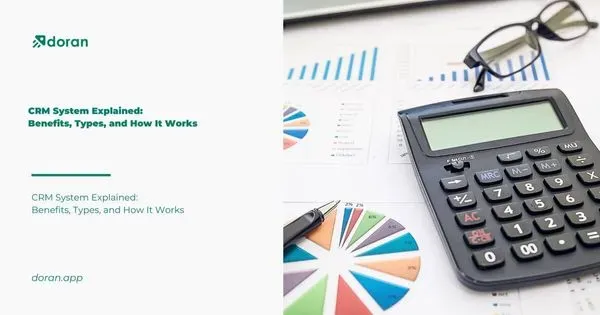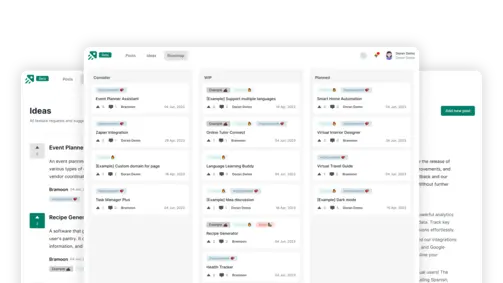Unlocking Product Vision: 3 Powerful Product Roadmap Examples
Create changelog and product roadmap for your product
Explore nowTable of contents 6 min
In product development, having a clear vision and a well-defined plan is crucial for creating successful and impactful products. This is where a product roadmap comes into play. A product roadmap is a strategic blueprint that outlines a product’s journey from conception to market launch and beyond. It’s a dynamic tool that aligns teams, communicates priorities, and guides development. In this article, we’ll explore product roadmap examples,exploring how different companies and industries use them to chart their course, innovate, and deliver value to their customers.
How to Prepare the Information for the Road Map
Before looking straight into some of our product roadmap examples, let’s learn together how to prepare the information for the roadmap.
Create a Goal(s) for a Specified Period
Planning for a one-year time doesn’t make sense because product managers rarely know what will happen in that period (market changes, the discovery of new user needs, etc.). For the month and the quarter, you just need to be focused on the who, what, and how of attaining one or more high-level objectives (even that time frame may be too short for agile teams and startups!).
How do you choose the product objectives for the upcoming quarter? It all begins with the product vision, regardless of where your company is in its lifecycle—whether you’re a scrappy 20-person startup or a 2,000-person multi-product portfolio enterprise. Roman Pichler refers to it as “the purpose of the product.” Your entire strategy should support the unique positioning of your product.

Assess the Issues that can be Addressed
It’s time to begin the problem discovery phase after you know your business objectives and have a product strategy built around monitoring and optimizing the associated metrics.
What user issues can you resolve to impact the metrics you’ve set? Look for the problems that will have the most influence on the objectives of the business.
-
Customer feedback: Communicate with your users often. This must be said again and again! Although feature requests from sales and CS/CX messages are helpful, a product manager must be actively involved in user discussions. Look for the issues that might be resolved throughout the time frame specified for the roadmap.
-
Usage information: How do customers use your features and product? Look for issues, obstacles, and recurring patterns in behavior that might be resolved.
-
Product competitive analysis: Learning about your rivals’ products gives you a complete picture of where your product fits into the market. Perform a thorough investigation, quantify the experiences, and compare them to what you offer.
Get on the Same Path with Your Internal Teams and Stakeholders
Your product roadmap planning must be collaborative from the beginning to the end.
The customer-facing teams are key touchpoints for product managers throughout the planning of the product roadmap. Most product managers need more time to do ongoing, thorough user research; more than 70% of Pragmatic Institute study respondents stated they spend less than five hours per month evaluating customer feedback.
How can you foster relationships with your teams while establishing the product roadmap? Engage in continual dialogue with the customer-facing teams and ask for their opinion on the suggested solutions.

Set KPIs and Success Criteria for the Projects on the Product Roadmap
Ensure your roadmap is linked to key performance indicators (KPIs) that are well indicated. Your route map should provide examples of, or be based on, the following information:
-
What effect will we have in the long run?
-
How will we determine whether this influence has been created?
-
How will the progress of this impact be updated and communicated? Objectives and Key Results (OKRs) are a well-liked technique to help product teams in providing answers to these types of questions. OKRs are an excellent foundation for defining goals since they divide a broad vision into specific goals.
The OKR goals are motivating as well as time-bound and achievable. Conversely, key results turn the qualitative component of objectives into measurable benchmarks.
Find out more: 9 Key SaaS Metrics To Maximize Your SaaS Performance
Who Will Have Access to the Software for the Product Roadmap?
Although the product team frequently benefits from the roadmap, other groups can use it.
For instance, your sales team might use your roadmap to answer inquiries from potential customers regarding upcoming releases. The status of a customer’s feature request may need to be checked by your Customer Success team. The roadmap may need to be viewed very differently by each team.
If you think you’ll require this, your product roadmap tool must make it easy for you to do so.
Your customers are another set of individuals to whom you might wish to grant access to the roadmap. The greatest strategy is occasionally to be open and offer a roadmap for your clients and potential clients to review. They will be informed of your plans for your goods in this way.
Customer viewing of the roadmap is not always possible with roadmapping tools. Ensure you select a tool that enables this if you want your consumers to have access.

Read more: SaaS Customer Journey Mapping - A How-To Guide
Examples of Product Roadmaps
Below are some product roadmap examples for your reference:
The Classic Product Roadmap
The first name in our roadmap sample template is the classic product roadmap. This road map can help you visualize your product strategy and coordinate your company. This roadmap can be used to show when and how your product will grow over time.
Agile Product Roadmap
Agile product roadmap is the second name in your recommended product roadmap examples. An agile roadmap shows the flexible evolution of your technology or product. Agile roadmaps put more of a focus on themes and progress than time-based roadmaps, which are more concerned with dates and deadlines. Agile roadmaps are an expression of where you’re headed rather than a set course of action, capturing the flexibility of the agile mindset.
Product Launch Roadmap
Last but not least, the product launch roadmap is in our product roadmap examples list. A product launch roadmap shows the steps involved in releasing a new product. All teams that are involved—product, development, marketing, and sales—are influenced by it. It lists every action needed to guarantee that pre-launch, launch, and post-launch strategies are successfully implemented.
Product roadmaps are potent tools that guide companies’ journey to product success. Examining a diverse range of product roadmap examples gives us valuable insights into how different industries and companies approach product development. Whether in technology, e-commerce, healthcare, or automotive, a practical product roadmap can be your North Star, guiding you through the complexities of innovation, competition, and customer expectations. Embrace the strategic power of product roadmaps, and let them steer your product towards greatness, ensuring it meets and exceeds customer needs and aspirations.
What to not miss out on our blog
Gain insightful knowledge and invaluable experiences from dedicated experts.

CRM System Explained: Benefits, Types, and How It Works
Discover everything about CRM system. Learn the benefits and how a CRM system works to improve customer relationships and streamline business operations.

Are you ready? Start your free trial today.
Enhance communication, keep track of the progress, understand customers' insight and more by taking your first trial on Doran.
Sign up for free


